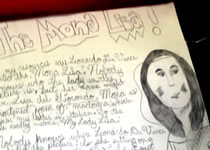 Instructional Models: Theory to Practice
Instructional Models: Theory to Practice
From alternative assessments to constructivist theory, the media specialist must be aware of the wide range of concepts, methods, and strategies available to enrich the teaching and learning process.
Whether you're co-planning with a teacher or developing your own professional materials, it's essential that instruction be effective, efficient, and appealing. As you bridge theory and practice, think of ways to engage learners in meaningful projects that result in authentic, meaningful products.
Theory to Practice Connection
Many organizations have attempted to pull together the key ideas in education. For example, the Center for Research on Education, Diversity, and Excellence's (2002) have identified five standards for effective pedagogy and the American Psychological Association (1997) developed learner-centered psychological principles.
Many people use taxonomies to convey their ideas about learning. These taxonomies often focus on the scaffolding needed for student success. These tools help educators organize their thinking about the learning process.
Marjorie Pappas and Ann Tepe (2002) describe the following key features of inquiry-based learning:
- Students wrestle with big ideas through essential questions. All learning activities are anchored to a larger task or problem.
- Learning reflects a connection to the world we live in.
- Students and instructors assess accomplishment through student demonstration of new knowledge.
- Learners have choices. They must have ownership of the problem-solving process.
- Student interact with each other to accomplish goals.
- Student reflect on both the content learned and the process by which they learned it.
With so many theories, approaches, and models, it's hard to know what will really be effective in an instructional situation. The key is transforming theory into practice. Start with an idea supported by quality research. Then, take the key elements of the idea and apply them to a simple learning activity. Try this approach with some of the key ideas presented above.
In the article Learning-Centered Libraries: Implications from Research, Barbara Stripling addresses the question "how many research studies on school library media centers does it take to influence practice?" as she explores the process of rethinking a library program based on research about learning. She states that "the process of rethinking a library program based on research about learning seems daunting. First we must identify from the research what we know about learning. Then we must derive the implications from those findings for learning, planning, and teaching through the library. Finally, we must evaluate honestly the effect of our programs on student learning."
Looks for ways to combine theory of teaching and learning with information inquiry activities. For example, in the article Getting the "Indian" out of the Cupboard: Using Information Literacy to Promote Critical Thinking, Rhonda Taylor and Lotsee Patterson combine information literacy and critical thinking.
 Go to Looking at Learning.
Go to Looking at Learning.
View AT LEAST TWO of the workshop videos related to learning (Windows Media Player - 6 Programs)
Understanding how children learn best is an important step toward improving mathematics and science teaching. This series features seven leading educators.
(You will need to register for this FREE website from Anneberg/CPB.)
![]() Read Chapter 7: Instructional Models Applied to Inquiry in THE BLUE BOOK by Callison and Preddy, p. 118-129.
Read Chapter 7: Instructional Models Applied to Inquiry in THE BLUE BOOK by Callison and Preddy, p. 118-129.
![]() Read Learning-Centered Libraries: Implications from Research by Barbara K. Stripling (SLMQ, 23(3), 1995).
Read Learning-Centered Libraries: Implications from Research by Barbara K. Stripling (SLMQ, 23(3), 1995).
![]() Read Using Information Literacy to Promote Critical Thinking by Rhonda Harris Taylor and Lotsee Patterson in Teacher Librarian (Volume 28, Number 2, December 2000).
Read Using Information Literacy to Promote Critical Thinking by Rhonda Harris Taylor and Lotsee Patterson in Teacher Librarian (Volume 28, Number 2, December 2000).
Learn More
Stripling, Barbara K. (1995). Learning-Centered Libraries: Implications from Research, SLMQ 23(3).
Taylor, Rhonda Harris & Patterson, Lotsee (December 2000). Getting the "Indian" out of the Cupboard: Using Information Literacy to Promote Critical Thinking. Teacher Librarian 28(2).
Theory into Practice by Greg Kearsley
